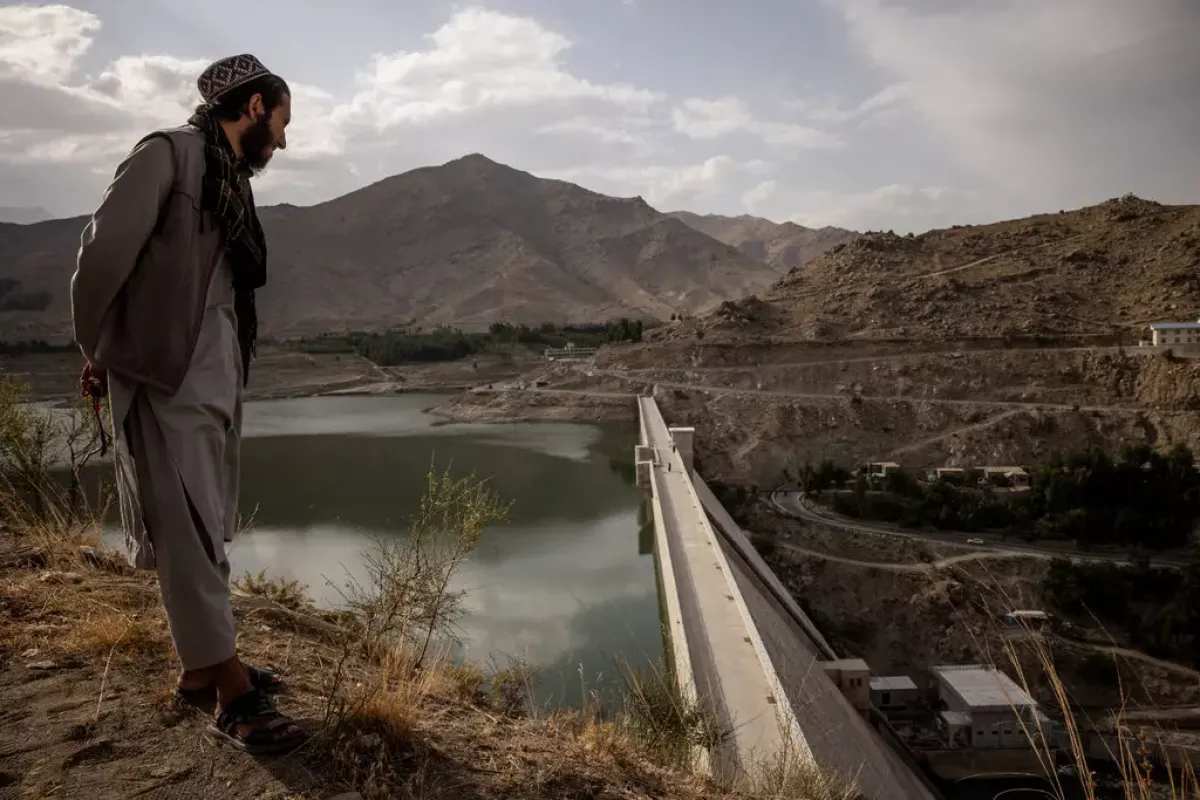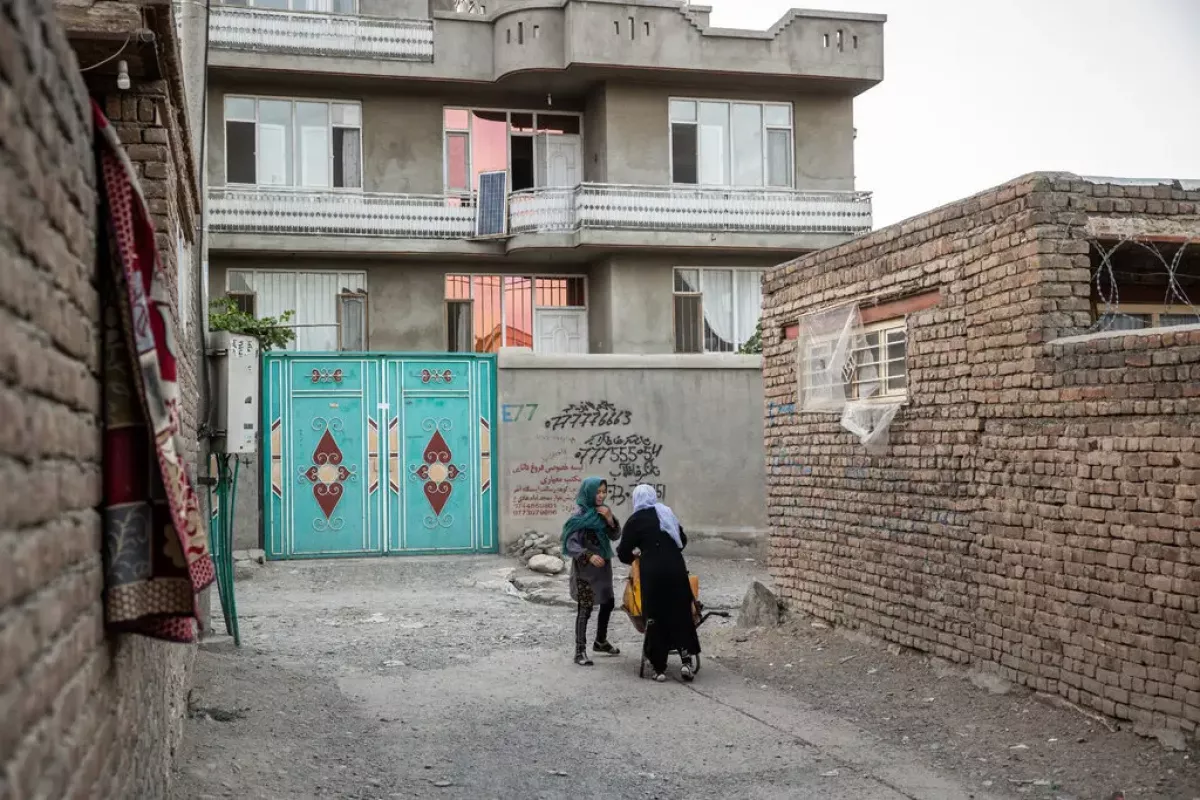Every drop counts as Kabul hurtles toward waterless future Article by The New York Times
As The New York Times reports, Kabul’s residents are fighting over water as the city runs dry, with neighbors clashing at mosque taps and wheelbarrows loaded with precious gallons becoming a common sight. “
You come with four canisters and you cut the line,” Aman Karimi hissed at a woman, snatching a hose. “It’s my turn, and it’s my right.”
Kabul — once cradled by snow-fed rivers and mountain streams — is drying out. Scarcer rainfall, shrinking snowmelt, and decades of unregulated well-drilling have pushed Afghanistan’s capital toward an unprecedented fate. By 2030, its six million residents could find themselves entirely without water, warned the aid group Mercy Corps. The city’s underground reserves are being depleted nearly twice as fast as they can be replenished.
The Taliban government, starved of international funds, has been unable to deliver large-scale relief by piping water from nearby dams and rivers. Kabul now risks becoming the first modern capital to lose its groundwater entirely — a collapse decades in the making.
“We are increasingly fighting because water is like gold for us,” Karimi told NYT as he pushed a wheelbarrow loaded with 40 gallons — the supply his family of five would ration for cooking, washing, and drinking. Forced out of their old neighborhood by soaring housing costs, they had moved into a home without running water.

City built without a plan
Kabul’s location once seemed a natural guarantee against thirst. Snowcapped mountains ring the city, three rivers run through it, and until the early 2000s, water shortages were almost unheard of. But the city’s population has swelled roughly sixfold in 25 years without a functional water management system to match.
Instead of investing in pipelines and regulated water delivery, greenhouses, factories, and entire residential districts have tapped directly into the aquifer. “Kabul has been struggling with water issues for two decades, but it never was a priority,” said Najibullah Sadid, an expert on water resources.
“Now the wells are drying up and it’s an emergency.”
According to teh article, across Afghanistan, water scarcity has reached crisis levels. The United Nations estimates that at least 700,000 people are displaced each year by climate change, mainly drought. A third of the country’s 42 million people lack access to clean drinking water.
International donors once financed ambitious projects — dams, pipelines, and neighborhood networks — costing hundreds of millions of dollars. Many collapsed in bureaucratic delay or corruption. Others were frozen in 2021, when the U.S. withdrew, the Taliban seized power, and most of the world refused to recognize the new government.
Digging deeper, drying faster
With no public alternative, Kabul residents have been drilling deeper into the earth. Boreholes pierce courtyards and basements. Yet even for those with private wells, the flow is not guaranteed. Just 20 percent of the city’s population had access to piped water as of 2021, according to the U.S. Agency for International Development — and much of that infrastructure is now failing.
Even the country’s national environmental agency relies on water tankers, each delivering more than 2,600 gallons a day, after its own well went dry. Across Kabul, the lifeline now comes on wheels: Chinese-made tricycles and Soviet-era trucks crisscross the city, hauling thousands of gallons.
For those who can’t afford delivery, the options are slimmer. They queue at mosque wells — if they still run — or rely on charity from wealthier residents. By evening, the city’s hills and narrow lanes glow with sunflower-yellow jerrycans, once used for cooking oil, now repurposed for water.

Wealth and thirst
In upscale neighborhoods, the shortages are just as visible. One morning, Haji Muhammad Zahir, a retired mechanical engineer and former City Council head, rushed outside at the sound of a recorded water delivery advertisement. His own well had gone dry years ago, and the public pipe to his home sputtered only once every three days.
He has urged the Taliban to act but is blunt about the challenge: “Where is the money for that?”
The government has made small steps. Since 2021, four dams have been completed nationwide, including one just 20 miles from Kabul that could supply thousands of households if connected by pipeline. Another plan to draw water from the Panjshir Valley awaits top-level approval.
But these projects face the same barrier: no funding. Foreign donors have “turned off the tap” and private investors are scarce, said Matiullah Abid, spokesman for Afghanistan’s Ministry of Water and Energy. “Our projects are big and we can only provide half of the funds.”
Long walk home
At the mosque where Karimi had clashed with his neighbor, the evening crowd slowly dwindled. Among the last to leave was 26-year-old Atefeh Kazimi, who filled her canisters in exchange for a few afghanis for the mosque. She then pushed her wheelbarrow uphill for 30 minutes toward home.
There was a mosque closer by, she said, but its well had run dry.
In Kabul, that is becoming the new reality — one street at a time, one well at a time. The fight over the city’s last drops has already begun.
By Sabina Mammadli








